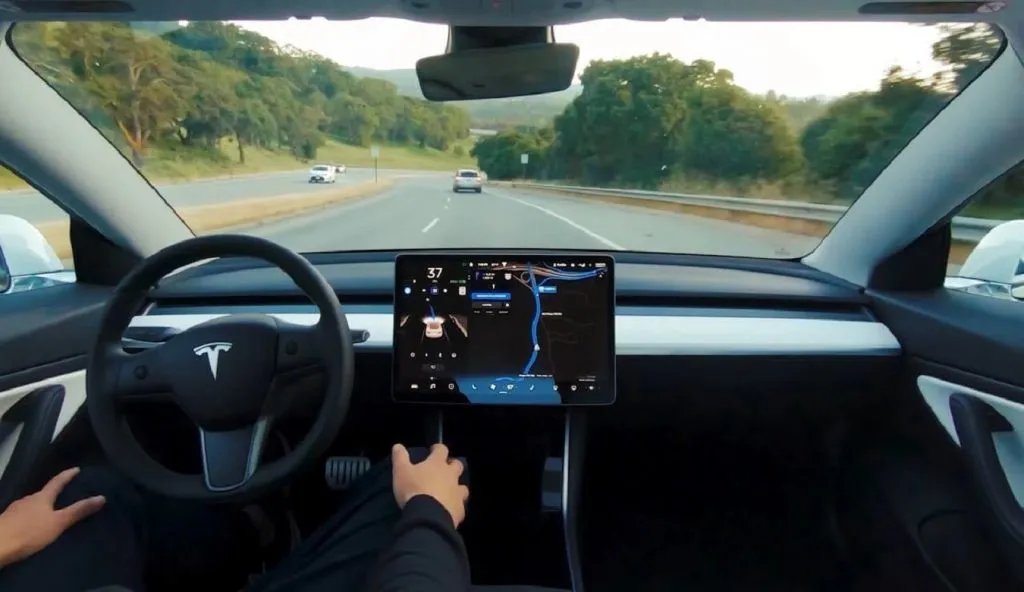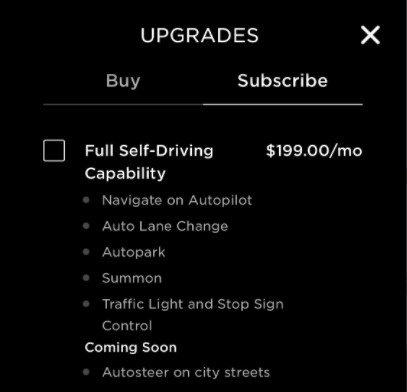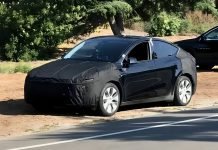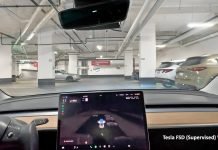In a greedy business pursuit, Tesla began rolling out optional hardware upgrades to early Tesla owners to access full self-drive on their EVs for $1500. Yes, it is a thing of the past, but why it was crucial to get to the bottom of the issues? What was the problem?
The extra charge came along with the $199 per month subscription to older Tesla owners telling their cars require the additional payment for accessing the FSD feature. Those early Tesla owners did pay it for the service already once when they purchased the car as Tesla told them that the EVs were already capable.
Later, a judge called on Tesla to let go of the charges to access the FSD service. The goal is to ensure that the customer can finally start using the Full Self-Driving beta software they had paid for, without any extra costs. It turns out that many other Tesla customers were facing a similar situation.
Here’s what happened!

Table of Contents
Tesla FSD In A Nutshell
A significant revelation unfolded as Tesla uncovered that the Full Self-Driving (FSD) Computer 2.0 and 2.5, initially installed in Tesla vehicles before 2019, did not possess the capabilities necessary to handle the advanced autonomous features the company aimed to implement.
In response, Tesla decided to transition to the FSD Computer 3.0, introduced in 2019, as the preferred hardware solution. Recognizing the impact on owners of older vehicles who had purchased the FSD add-on, Tesla gave them complimentary upgrades to the FSD Computer 3.0.
According to reports, Tesla has informed California regulators that its system currently provides Level 2 autonomy, as per the standards set by the Society of Automotive Engineering (SAE).
True, fully autonomous capabilities would only be achieved at Level 4 or Level 5, indicating that there is still considerable development required before reaching that stage.
The news left Tesla owners scratching their heads, coming to light that the electric vehicle manufacturer is charging customers an additional $1,500 for the hardware they believed they had already paid for. This unexpected development has sparked controversy and raised questions about the company’s practices and transparency.
The company has gained a dedicated following of enthusiasts who appreciate its commitment to amazing tech and autopilot capabilities. However, the recent decision to charge customers for the hardware they had assumed was already included with their initial purchase has generated disappointment and frustration among some Tesla owners.
Despite the passing of several years since FSD’s initial introduction, Tesla has diligently incorporated numerous features and made notable improvements. However, it’s important to note that the system, while impressive, is not yet a fully autonomous “self-driving” solution.
Tesla Charging A “Little” Extra
Tesla unveiled the subscription-based option for their highly anticipated Full Self-Driving (FSD) system, offering a much more affordable alternative for customers. With a monthly fee of just $199, this subscription model stands in stark contrast to the previous upfront payment of $12,000 to $15,000 that customers had to make.

Notably, Tesla has granted users the flexibility to add or cancel the FSD subscription at any time, providing them with greater convenience and control over their usage. However, a slight complication emerged for some subscribers who eagerly opted for the FSD subscription.
Despite enrolling in the program, they discovered that the technology remained inaccessible without an additional payment of $1,500 for the essential FSD computer upgrade. Unlike those who made a full upfront payment, subscribers were initially required to cover this cost themselves.
Nevertheless, in response to customer feedback, Tesla subsequently reduced the price of the computer upgrade to $1,000, alleviating the financial burden for subscribers.
In a later legal development, a Tesla customer affected by the additional charges for the required computer upgrade took legal action against the company. This lawsuit was prompted by Tesla’s initial promise that all necessary hardware would be either included or available for free upgrades.
As reported in a post by Electrek, the customer, Ian Jordan, emerged victorious in the case. Jordan pursued the matter in a Washington small claims court, but Tesla failed to appear, resulting in a default judgment in his favour.
In a further victory for the Tesla owner, they succeeded in a related claim against the company. The dispute arose when Tesla informed the customer that an upgrade to a component in their other Tesla vehicle was necessary.
Despite the unit being under warranty, Tesla insisted on charging the customer to move up to the newer version. However, the judge presiding over the case ruled that this constituted a breach of warranty. Consequently, Tesla was ordered to compensate the owner for the cost of the new unit, which amounted to approximately $1,650.
In addition, the judge awarded an extra $500 to the customer as compensation for the issues caused by the loss of functionality.
Tesla again found itself in a similar situation where it broke its promise to Tesla Solar Roof customers by increasing prices on contracts that had already been signed. This decision came after keeping early customers waiting for a year or longer, creating uncertainty about the availability of Solar Roofs.
Unfortunately, this is not an isolated incident for Tesla. Even before these events, numerous early Model 3 owners had purchased vehicles with Full Self-Driving capabilities, despite the software not yet having any functionality.
They believed that by doing so, Tesla would be obligated to provide free computer upgrades if the hardware proved inadequate in the future. This pattern of behavior from Tesla has become common enough that many owners had anticipated such situations occurring years in advance.
Why Charging Extra Makes No Sense?
One of the key selling points for many Tesla vehicles has been the promise of full self-driving capabilities, or at least the potential for such capabilities in the future. As part of this promise, Tesla has marketed their vehicles as being equipped with the necessary hardware to enable autonomous driving. This hardware includes a suite of sensors, cameras, and other components that form the foundation of Tesla’s self-driving technology.
However, it has now come to light that Tesla is requiring customers to pay an additional $1,500 to “activate” the hardware they believed they already owned. This news has left many owners feeling deceived, as they had initially purchased their vehicles under the assumption that they were paying for a complete self-driving package.
To add to the frustration, some customers argue that the functionality they are being asked to pay for has been promised for years but has yet to materialize. Despite numerous delays and missed deadlines, Tesla has continued to charge for the potential of full self-driving without delivering on those promises.
Critics argue that this pricing strategy is misleading and lacks transparency. While Tesla maintains that the extra charge is necessary to cover future software updates and improvements, the fact remains that customers were not clearly informed of this additional cost when making their initial purchase.
Tesla’s decision to charge for features that were previously marketed as part of the original purchase price raises concerns about customer satisfaction and autonomous monopoly. It also raises questions about their marketing and sales practices, as well as the overall transparency of their pricing structure.
Tesla has undoubtedly made significant contributions to the electric vehicle market, pushing the boundaries of what’s possible and challenging traditional automotive norms. However, this weird episode highlights the importance of clear communication and transparency in customer relations.
Having been founded 20 years ago in 2003, Tesla has evolved into an immense company boasting a workforce of over a million employees. Generating approximately $23 billion in revenue each quarter, the company has even secured its place in the prestigious S&P 500 index.
With such stature, it can no longer be considered a startup and charging unnecessarily like this. Consequently, using that label as an excuse for any ill-advised actions is no longer acceptable. Tesla needs to mature and cease misleading and lying to its loyal customers.
Final Thoughts
As Tesla continues to evolve and shape the future of transportation, it is essential that they maintain an open and honest dialogue with their customers. Providing clarity on pricing, ensuring transparency in feature offerings, and meeting customer expectations are all critical components of fostering trust and loyalty among their dedicated user base.
As customers eagerly embrace the FSD subscription offering, it remains to be seen how this pricing adjustment and the overall subscription model will shape the future of self-driving technology in the automotive industry.
In conclusion, the decision by Tesla to charge owners an additional $1,500 for the hardware they believed they had already paid for is an unfortunate development. It underscores the importance of transparency and clear communication between companies and their customers.
Looking ahead, Tesla might encounter a similar scenario in the future, wherein vehicles will necessitate improved and more robust computer hardware to enable higher levels of autonomy. This serves as a notable drawback of utilizing terms like “Full Self Driving” when the vehicles themselves are not entirely self-sufficient.
As Tesla moves forward, they must address these concerns and work towards building a stronger relationship with its customers based on trust and integrity.



















What about EAP buyers. Shouldn’t they also get the computer upgrade?
FSD was always an expensive option. Those that paid for it were upgraded to new processors when they later became available at no cost.
This is true, but the monthly option wasn’t available before. I wonder if those of us who purchased the full FSD will ever see the needed upgrades to cameras and computers that will actually allow the promised FSD capability that we were promised. HW5 in 2028 with camera upgrades (and additional sensors) will probably be required.
Is this $1500 same as the infotainment system upgrade? I have purchased my Tesla in 2017 with full FSD package. Later they upgraded the hardware to 3.0 for free, but now saying that without $1500 infotainment upgrade my car will not be able to fully utilize FSD.
Wondering same thing.
Don’t waste your money! FSD is garbage!
Problem is I still need a driver’s license to operate a full self driving car.
Congratulations for having the most uneducated comment , I’ve ever heard !! , of course you still need a licence . Planes have ” auto pilot ” and you still need a pilots licence , and also please learn the difference between ” auto pilot ” and fully ” autonomous ” , Tesla’s ” auto pilot ” function is not fully autonomous in stop and go traffic , you as the operator need to be alert, ready to control the car at all times , and have a LICENCE !!! 🤦
Congratulations for having the most uneducated comment , I’ve ever heard !! , of course you still need a licence . Planes have ” auto pilot ” and you still need a pilots licence , and also please learn the difference between ” auto pilot ” and fully ” autonomous ” , Tesla’s ” auto pilot ” function is not fully autonomous in stop and go traffic , you as the operator need to be alert, ready to control the car at all times , and have a LICENCE !!! 🤦
Don’t trust anything Tesla but especially Elon has to say! I’m an early adopter and own three Teslas. The customer service has gone to s**t at service centers. Will be buying another car brand for my next car.
Completely agree!!!
In 2017 I bought an X and was led to believe the car would soon be driving me around. I just upgraded to Intel CPU, new touch screen and auto pilot 3.0, $3,000 CND. I still need to pay another $8,200 CND to upgrade and I am sure it will be much more then that and full of problems. I agreed to upgrade the CPU when I took my car in for a maintenance check up, we were going on a road trip. No problems with the car. I did the upgrade and immediately had an issue with the electric battery heater (not covered by battery warranty) and the A/C Condenser, $2,500. With maintenance and taxes I am close to $7,000. There was nothing wrong with my car before I took in for a maintenance checkup and agreed to the upgrade. Unfortunately, I am still having issues and they want to charge me to diagnose those issues. It is a complete joke! I have owned many luxury vehicles and I can say Tesla can learn a lot from how BMW treats their customers.
I was a Tesla advocate and several of my friends and family bought Teslas. I was found of parroting what the salesperson told me “there are roughly 350 parts in a Tesla and over 3,000 in an ICE vehicle, there is nothing to really go wrong with this vehicle, maintenance will be next to nothing.” I am writing to say nothing could be further from the truth; Add this to the bold lies regarding distance and I would now tell a future buyer to beware. You can not trust what you are being told.
Love tesla. Cops can’t keep up. Haha